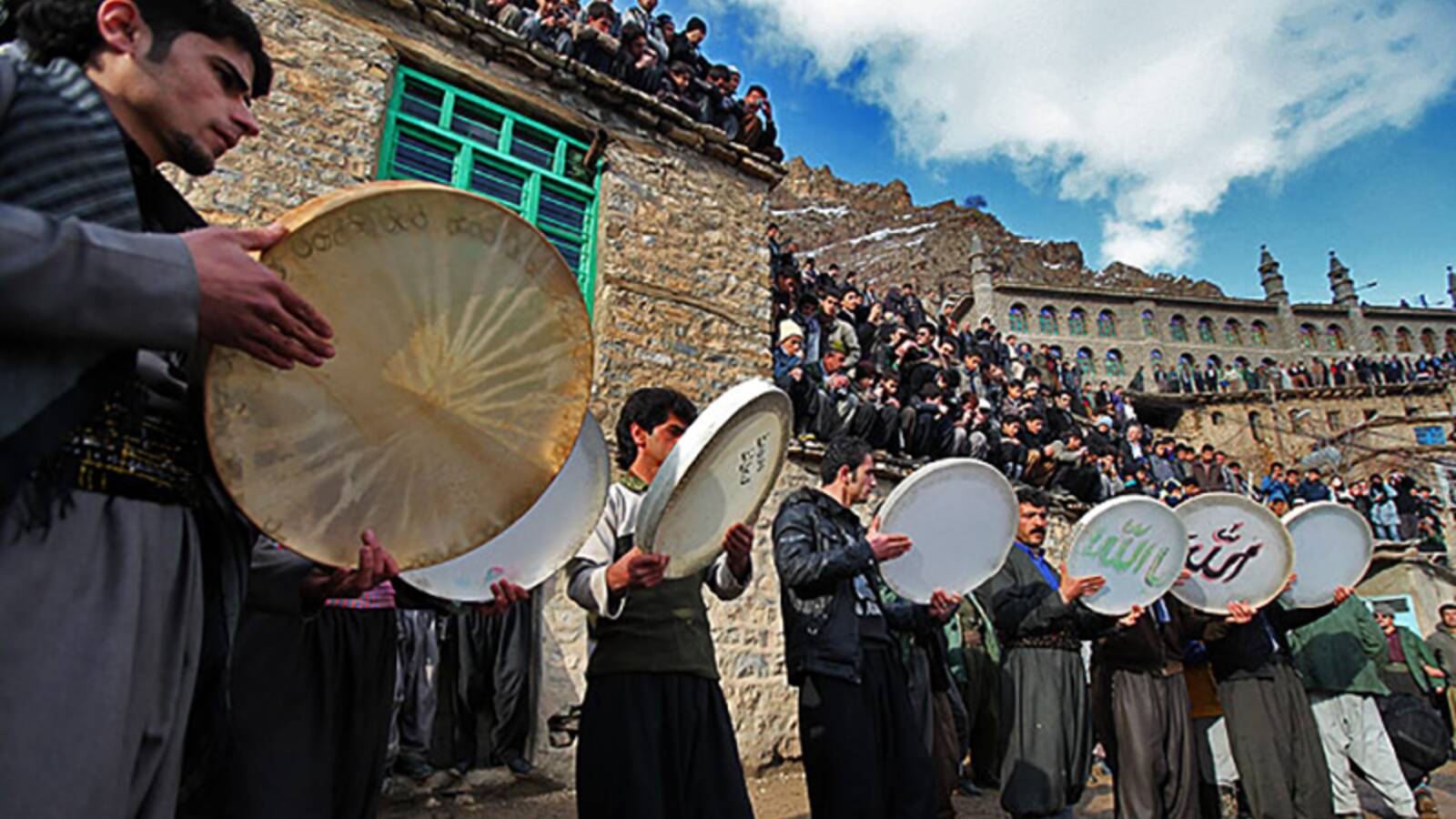
Uraman Takht had been a rural region, in the past, with an extraordinary and astonishing nature along with a particular architectural style in which a house's roof is the other house's courtyard. Holding many various rituals in this region led Uraman Takht to be considered a main part of Ancient Iranian culture which has been inscribed as one of the main tourism poles of Iran. The old ceremony of Pir-e Shaliyar, known also as "Pir-e Shaliyar Wedding" among locals, is a spiritual event of several thousands years history which is held two times in a year during three consecutive days.
The Urami Pir-e Shaliyar (OR Pir-e Shahriar), the saint of Sufis, is a highly respectable character among the Naqshbandy darvishes. According to a native legend, he was a physician with supernatural wonders (keramat) who cured the Bokhara King's daughter, Shah Bahaar Khatoon, and they got married after her healing. With this regard, the 45th day of spring, in the first half of the Ordibehesht, is celebrated with some special rituals on the occasion of Pir-e Shaliyar and the Princess wedding anniversary. The 45th day of the winter, i.e., the close Wednesday to the half of Bahman) is also celebrated for their son's birthday.
The proper day for holding the event is determined by its certain trustee. The ceremony begins in Tuesday with distribution of walnuts of waqf trees by children among Uraman locals and surrounding villages and then receiving some fruits and sweets instead of the given walnuts, all of which are known to be the "Kelav Rochneh" rite, the ceremony may continue to the next morning after the Adan. The participants' duty is in the Wednesday morning to sacrifice animals like cow, sheep and goat. The victim meats are distributed among locals and they cook a symbolic food named "vloshin". Darvishes and men dressed in their local cloths start to dance in a circle in front of the Shaliyar house; some plays daf and some others sing the traditional Kurdish songs and the group repeats some certain spiritual hymns.
The number of dancers is continuously increased in each turn. When excitement reached its peak, darvishes are separated from the main group, start their own particular faster dance, i.e., Sama', at the center of the main circle and their faces are obviously recognizable by their long hairs. The ceremony continues in Thursday morning in the form of a more private rite than in the previous days in which darvishes gather around the Pir-e Shalyar tomb and they perform dance, Sama', and play daf; the event will be more public in the afternoon after the beginning of dance.
The Sufism beliefs say that the women are neither permitted to be present and watch the Sama' performing event, nor they do not have to attract the darvishes' attentions and consequently distract them. People gather again around the tomb for worship and prayer in the Friday morning. In addition to dance and Sama', the final stage of the ceremony include the evening party in Pir-e Shaliyar house, circulating his leather shoes, eating a local golden bread known as "Kolireh Mozhge" with yogurt, installing some cloths on the walls, doors and trees. In spite of the fact that Pir-e Shalyar is an extremely olden ceremony, people still comes to Kurdistan from the surrounding cities to see the ritual in person. Locals are highly believed in him and bring their patients to the event in order them to be cured by Pir.